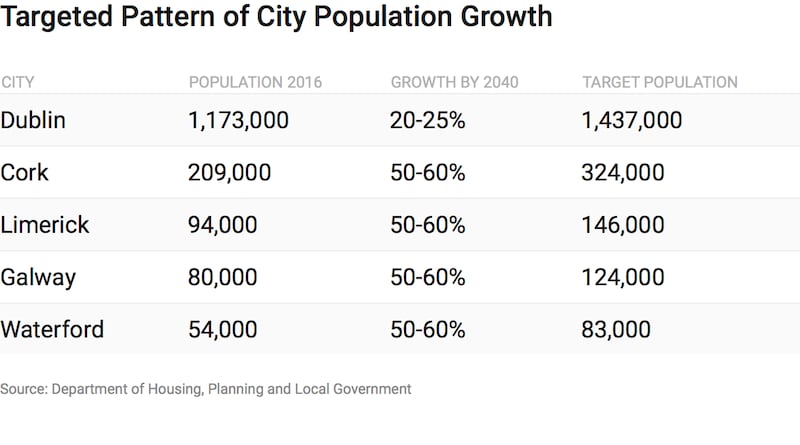Turning Athlone into a city could devalue 15 years of work and threaten investment in neighbouring counties, opponents of the proposal fear.
The notion of Athlone being elevated to second-tier city status under the National Planning Framework is causing friction among organisations that try to sell the region as an interconnected grouping of relatively equally-sized towns.
This joined-up vision was originally set out in the National Spatial Strategy 2002. In 2007, business representatives in Athlone, Tullamore and Mullingar formed the Midlands Gateway Chamber with a view to promoting the entire midlands region.

The Midlands Gateway Chamber wanted the towns of Athlone, Tullamore and Mullingar to be designated and developed as a “polycentric” city under the framework. The Chamber argued that a new shift in priority towards “monocentric” development would not only devalue the efforts of the past 15 years, it would also be “an unrealistic and retrograde” step.
Chamber president Tom Griffith said “the whole Midlands Gateway was based on balanced regional growth”. He said he would not engage in controversy over Athlone’s potential city status as it was out of his control. “The original plan was that it was going to be above politics. It doesn’t seem to be now.”
Regional city
Last year Athlone made a pitch for city status in a submission to the framework. The submission envisaged Athlone as the regional city for the midlands linked to a string towns including Roscommon, Longford, Mullingar, Tullamore, Birr and Ballinasloe. While the draft framework plan made no reference to the proposal, local Minister of State Kevin “Boxer” Moran has said he favours Athlone becoming the capital of the midlands.
Meanwhile, business leaders in Cork are looking forward to the unveiling of the National Planning Framework, confident in the belief that a number of key infrastructural projects for the region will be included which should ensure that they are part of future government capital investments.
Cork Chamber chief executive Conor Healy said its focus will not just be on what infrastructure the Government seeks to invest in on Leeside but also how it envisaged Cork developing over the next two decades particularly as a driver of economic growth in the region.
Opportunity
“The Ireland 2040 plan is a hugely important opportunity to restore balance to growth across Ireland to ensure a better, more sustainable society and economy for the future of our country. In Cork, Ireland has a thriving second city and its status needs to be clearly stated in the 2040 plan,” he said.
“As a city region, we have capacity to scale and become home to many more people and jobs. To leverage Cork’s true potential as European centre of growth would enhance Ireland’s metropolitan profile and strengthen the Southern Region as a real complementary centre of growth to Dublin.”
Mr Healy identified a commitment to the €850 million M20 Cork-Limerick motorway, the € 110 million Dunkettle Interchange and the € 180 million N28 Cork to Ringaskiddy as all essential to driving growth and ensuring Cork achieves a sufficient scale to provide a counterweight to Dublin.
Cork docklands
He also expressed hope that the Government would recognise the Cork docklands as a national asset that would help Cork grow both jobs and population but stressed that for Cork to become a truly sustainable city, there needed to be significant investment in public transport on Leeside.
“The last investment plan failed to deliver a high speed Cork -Dublin rail link and had no big-spend public transport projects outside of Greater Dublin. If Government is to live up to its vision of avoiding planning mistakes of the past we cannot ignore the importance of public transport.”










